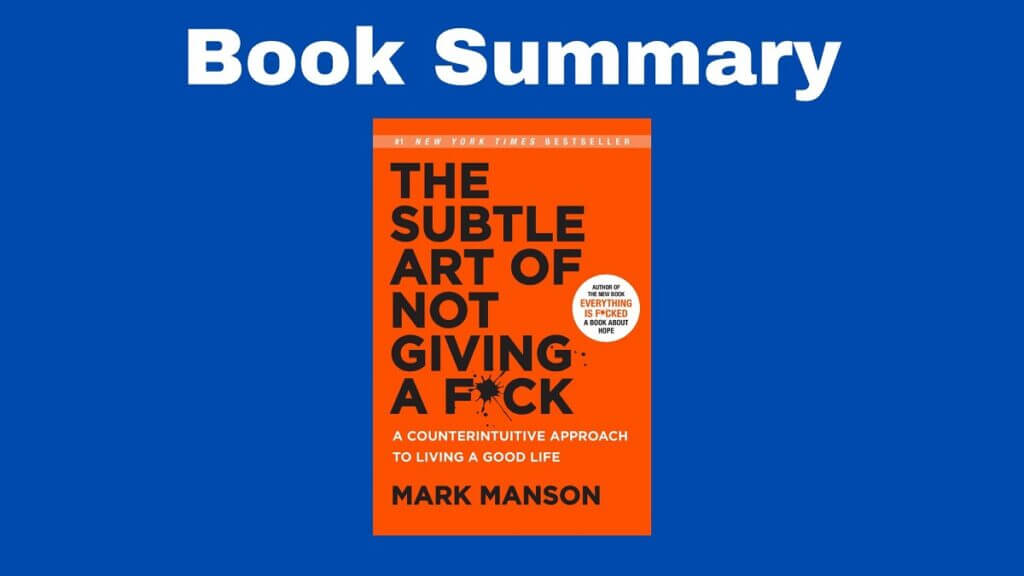The Book in Three Sentences
In this summary of The E-Myth Revisited, you’ll learn about the life of a business and the lessons you need to know for a business to succeed. One of the book’s most important contributions is the difference between working on your business and working in your business. As the title suggests, there are many myths surrounding starting your own business and the author explains how to avoid them.
The E-Myth Revisited Summary
Part I: The E-Myth and American Small Business
Chapter 1: The Entrepreneurial Myth
One day, you’re hit with “the entrepreneurial seizure”. This is an exciting moment when you start considering having your own business instead of working for someone else’s. This is the idea of being your own boss.
The first problem you run into is the thought that anyone can run a successful business.
You think that “if you understand the technical work of a business, you understand a business that does that technical work”. This isn’t true. These are two different things. If you’re a musician, you shouldn’t open a music shop. Don’t turn the work you love into a job. The work that starts out of love for something soon becomes a tedious task.
Chapter 2: The Entrepreneur, the Manager, and the Technician
Everyone who goes into a business is three people in one: entrepreneur, manager, and technician. They all have different interests, wants, and dreams.
- The Entrepreneur is the visionary, the dreamer, full of energy and imagination. He or she lives in the future, never in the past. The entrepreneur is creative and wants control.
- The Manager is pragmatic. He or she is predictable, organized, and lives in the past. This is the person who creates order.
- The Technician is the doer, the tinkerer. He or she lives in the present. The technician wants to be in control of the workflow and does one thing at a time.
Chapter 3: Infancy: The Technician’s Phase
As a business owner, it’s your responsibility to do what the business needs and not what you want. A business needs growth and change. The technician wants the opposite of that.
The three phases of business growth:
- Infancy: this is an optimistic stage. The owner and business are one. You juggle too many things at once.
- Adolescence: here’s where the problems start which leads to some changes.
- Maturity
The technician just works. You can’t just work in a business, you also have to learn how to grow. A business shouldn’t depend on you entirely all the time.
The purpose of a business is to get a free job so that you can offer jobs to others. You do it to satisfy a need in the market. You can’t build a business based on what you were already doing before and hope to get paid for it.
Chapter 4: Adolescence: Getting Some Help
A crisis in the infancy stage leads to the adolescence stage. This is where you need help. Then your business grows and you need even more people. This leads to inevitable problems.
Chapter 5: Beyond the Comfort Zone
The Adolescent stage ends when the business pushes the owner beyond his or her comfort zone. A business soon needs a manager and as it grows, there are three options:
- The business goes back to its infancy. This means you go back to doing everything yourself on a small scale. Soon, your business becomes your job.
- It can go for broke.
- It can hang for dear life. To survive, you need to admit you need help and you get it.
Chapter 6: Maturity and the Entrepreneurial Perspective
The best businesses in the world are mature and they started out that way. The people behind mature companies have a different perspective on business.
Tom Watson, the founder of IBM had a model for his company to succeed. Right from the start, you should have a clear vision of what you want your company to look like and how it should act. According to Watson, you should also want your company to look like a great company, even before it becomes one.
Don’t do business, build one. Don’t do work just work for work’s sake, look for a higher purpose.
The Entrepreneurial Model fulfills the needs of customers in an innovative manner. This model isn’t about what’s done in the business, but how business is done. To succeed, you need to have a clear picture of your customer.
Part II: The Turn-Key Revolution: A New View of Business
Chapter 7: The Turn-Key Revolution
The Turn-Key Revolution has the potential to transform any business regardless of its size.
The franchise phenomenon started in 1952 when a 52-year-old businessman called Ray Kroc walked into a hamburger stand in San Bernardino, California. The place was called MacDonald’s (which later became McDonald’s) and what surprised Kroc was that the business was quick, effective, inexpensive and anyone could do it.
Early franchises were called “trade name”. This is where the franchisor licenses the right to small companies to market nationally-known products locally.
Most people believe that the value of the franchise lies in the product it sells, but that isn’t true. The true product isn’t what you sell, the true product is the business itself. Mc Donalds wasn’t about hamburgers, it was about McDonald’s. Ray Krock eventually went to work on his business, not in it.
Chapter 8: The Franchise Prototype
The Franchise Prototype is where everything is put to the test before you actually become part of the business. For a business to run well, you need a system and for a system to work, you need people. Once you have all the different parts working together, the business becomes an organism. As soon as the franchisee learns the system, they are given the key to his business. This is called the Turn-Key Operation. Franchise gets right to use the system, learns how to run it, then “turns the key” and the business takes care of itself.
The Business Format Franchise is a way of doing business that differentiates every business from every one of its competitors. The job of the business owners is to turn the business into something that works predictably, effortlessly, and profitably.
Chapter 9: Working on Your Business, Not In It
Remember that your business is not your life. You shouldn’t serve your business, your business should serve you. Therefore, you should work on your business, not in it. Will your business work if you tried to clone it? Will it still be successful?
There are rules to the “franchise game”:
- The model should provide value to customers, employees, suppliers, and lenders.
- People with the lowest level of skill will apply the model.
- Order is paramount.
- Operations Manuals will document work.
- The model will be predictable to customers. It will show consistency.
- There will be a uniform color, dress code, and facilities.
Part III: Building a Small Business that Works
Chapter 10: The Business Development Process
The foundation of a Business Development Process is the integration of the following activities:
- Innovation: innovation isn’t about creativity, is about doing.
- Quantification: innovation on its own leads to nowhere. Therefore, innovations need to be quantified. The numbers you get out of the quantification process represent the impact an innovation makes.
- Orchestration: this is about planning and anticipating. Everyone should be following the same rules and show consistency.
Chapter 11: Your Business Development Program
The business development program has seven steps:
- Your Primary Aim
- Your Strategic Objective
- Your Organizational Strategy
- Your Management Strategy
- Your People Strategy
- Your Marketing Strategy
- Your Systems Strategy
Chapter 12: Your Primary Aim
Before you can focus on your business, you have to focus on your life. Live intentionally, not accidentally. For your business to have an impact beyond work, answer the following questions and establish your Primary Aim:
- What do I value most?
- What kind of life do I want?
- What do I want my life to look like?
- Who do I wish to be?
Chapter 13: Your Strategic Objective
Once you visualize the kind of life you want, you can turn to the business that will get you there.
The Strategic Objective is a statement that establishes what your business has to do in order to attain your primary aim. This sees business as a means rather than an end. The Strategic Objective isn’t a business plan. Your Strategic Objective is a list of standards, a tool for measuring progress, and a template for your business.
The First Standard: Money
How much money do you need to live the way you wish? How much money do you need to be free?
The Second Standard: An Opportunity Worth Pursuing
A business that fulfills your Primary Aim and Strategic Objective. You have to ask yourself the question: “what kind of business am I in?” Nobody’s interested in the commodity. People buy feelings. Another important question to ask yourself is “who is my customer?” Use this question to determine the age, sex, income, family, status, education, and profession of the people who buy from you. These variables are a combination of demographics and psychographics.
Standards Three Through?
There are no fixed numbers of standards in your Strategic Objective. The standards you create shape your business and the experience you have.
Chapter 14: Your Organizational Strategy
Organizing around personalities results in chaos. Instead, to organize your company, do an Organization Chart where you detail the position of each employee and what they have to do as part of that position.
The next step would be to replace yourself with a system. This is to develop a business that works, even when you remove yourself from the equation. You’re not indispensable, so replace yourself with a system that works.
Chapter 15: The Management Strategy
Implementing a Management Strategy doesn’t depend on having competent managers. You can’t afford them and you don’t need them. What you need is a Management System, this is the solution to your problems.
What is the Management System? This is a system that’s part of your Prototype whose main purpose is to produce a marketing result. It’s a marketing tool and it creates an effective Prototype.
Chapter 16: Your People Strategy
You can’t get people to do what you want. Instead, you have to create an environment where “doing it” is more important than not. “Doing it” should be a way of life.
Take the operation (running a business) seriously. You shouldn’t look for employees that work a job, you should look for players that want to play the game you’ve created. The rules of the game are the ideas you have about the world. So positive ideas share optimism, but negative ideas spread pessimism.
The game starts and ends with how you act.
- The game can’t be contrived.
- The game can’t be cynical.
- The game has to be real.
- How you act establishes how the players will see you.
The rules of the game:
- Never figure out what you want your people to do and then try to create a game out of it.
- Never create a game for your people that you’re unwilling to play yourself.
- Make sure there are specific ways of winning the game without ending it.
- Change the game from time to time: the tactics, not the strategy. The strategy is sacred, this is the foundation of your business and should never be changed.
- Never expect the game to be self-sustaining. People need to be reminded of it constantly.
- The game has to make sense.
- The game needs to be fun from time to time.
- If you can’t think of a good game, steal one.
Systematizing should be about humanizing the experience. You should be able to teach how to run your business to anyone.
Chapter 17: Your Marketing Strategy
Forget about everything except your customer. Visualize your customer: what you think your customer wants and what he actually wants are two different things. The two pillars of a successful marketing strategy are demographics (who he is) and psychographics (why he buys).
Chapter 18: Your Systems Strategy
The author defines a system as “a set of things, action, ideas, and information that interact with each other, and in so doing, alter other systems.”
There are three kinds of systems:
- Hard systems: these are inanimate things, such as a computer or a whiteboard.
- Soft systems: these are both animate things (such as a person) and ideas (such as a script).
- Information systems: those that provide information about the interaction between the hard and soft systems. For example cash flow, forecasting, sales reports.
Chapter 19: A Letter to Sarah
Throughout the book, the author has a discussion with a person named Sarah. Gerber uses his interactions with Sarah to illustrate the ideas of The E-Myth to the reader. The closing chapter is a letter dedicated to her.
Epilogue: Bringing the Dream Back to American Small Business
This book is a “call to arms”. Your small business can be the bridge between you and the world.
Further Reading
If you liked this summary of The E-Myth Revisited, check out these other articles:




